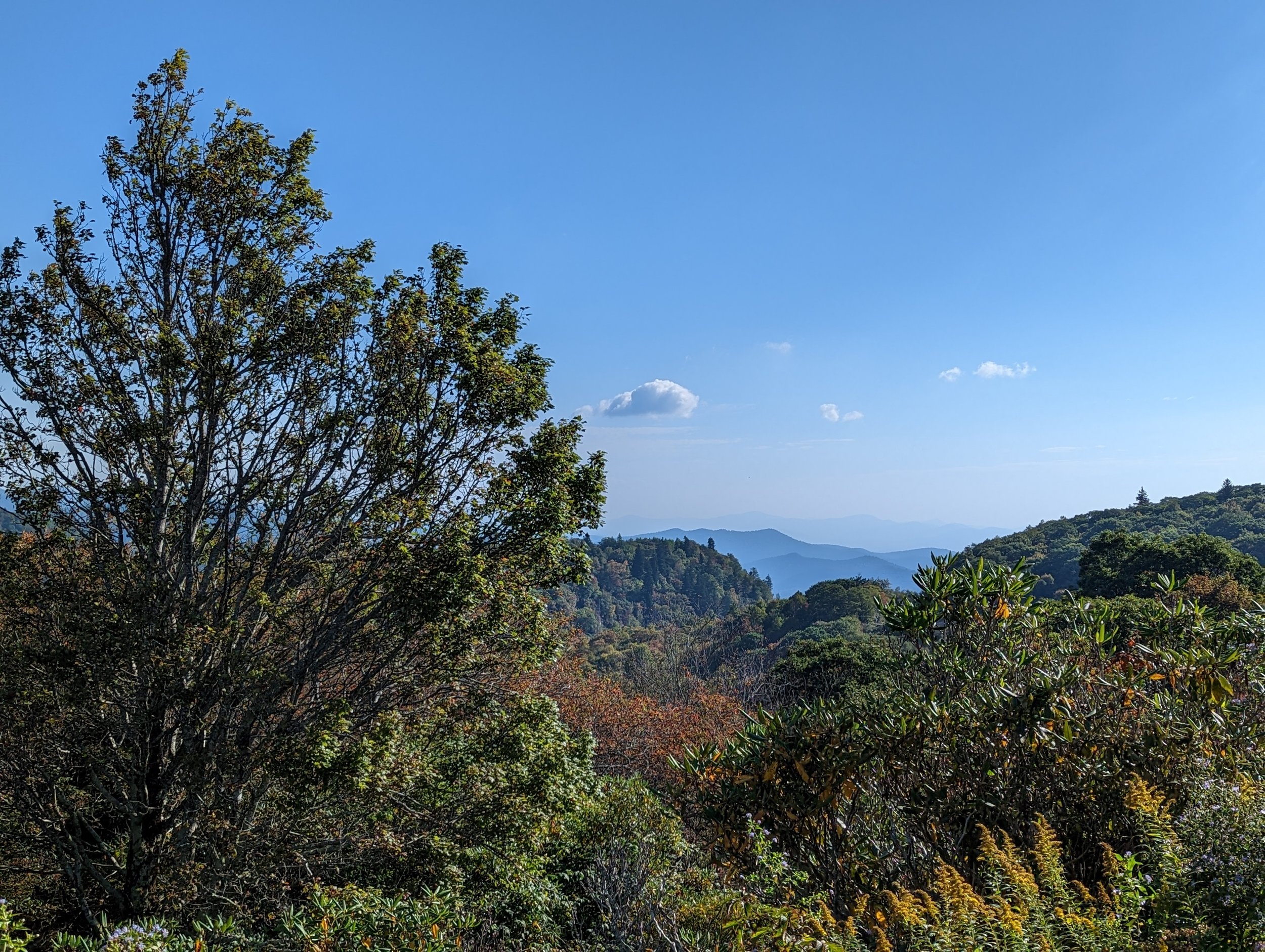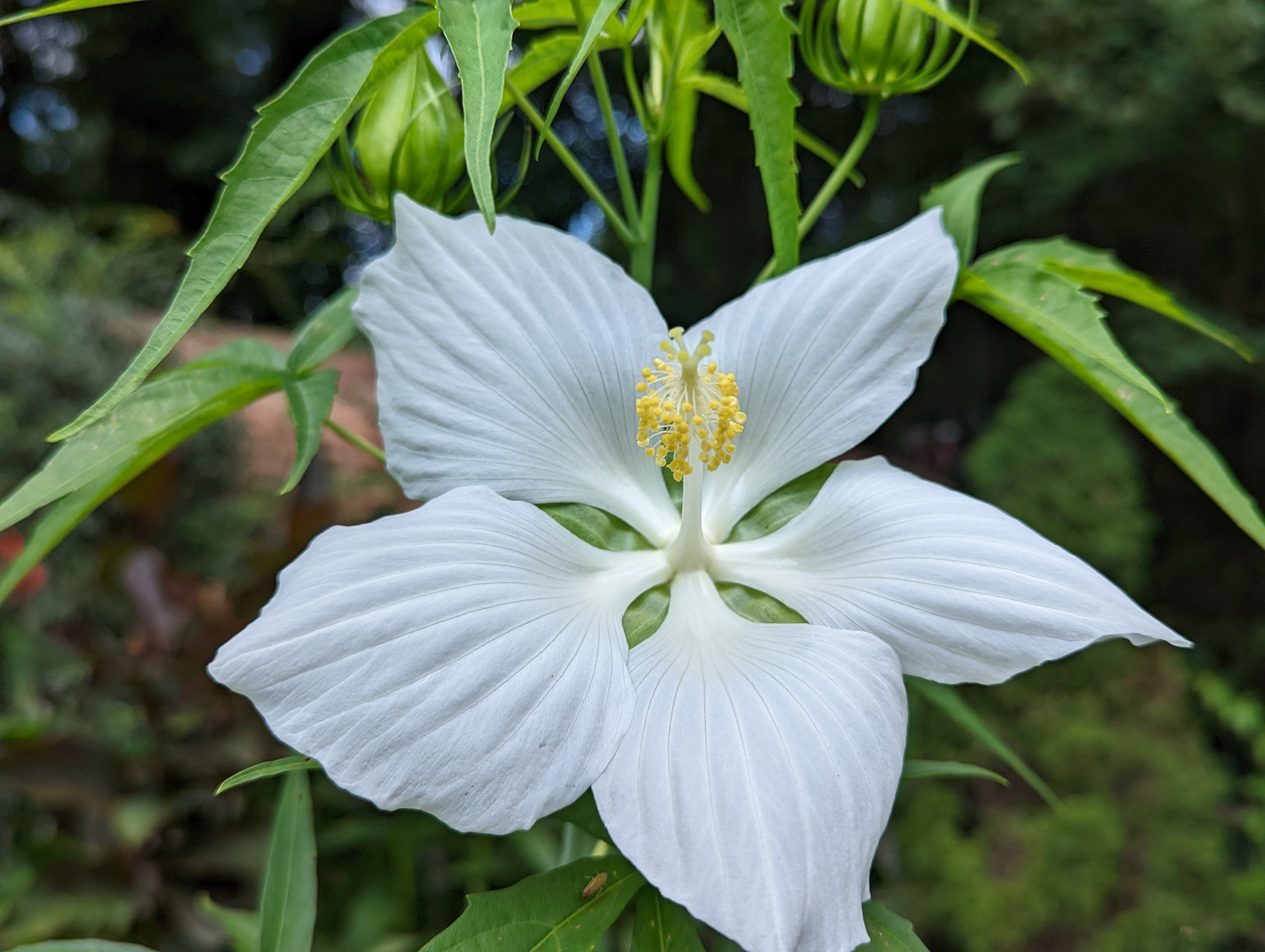All that remains in mid October - peppers and eggplants in straw bales
The end is getting closer. This is the first article from V3 #2 - the last two issues of Volume 3 have 6 articles each (of which this is the first), and there are two articles in never-seen, incomplete Volume 4, Number 1 - the end of Off The Vine. Doing the math/calendar, that means 14 articles remain. Publishing these weekly, that would take me to mid January to finish my project of ensuring all Off The Vine articles are republished on this blog. I can certainly speed up a bit so that all are squeezed into this calendar year - the job will be completed by the time that we turn the page into 2023.
___________________
C and C’s Corner
by Carolyn Male
Happy Holidays, everyone! We never expected to be this late with this issue, but sometimes “stuff” happens. And when it happens to Craig and I at pretty much the same time, there’s nothing we can do about it. I apologize to those of you who renewed and I did not get your checks deposited in a timely manner. And I apologize to those of you who are new subscribers for not getting this issue out on time. I held your subscriptions, assuming that this issue would be sent out in October. I was wrong!
A word of explanation is in order. My mother declined rapidly over the summer...mental deterioration (not Alzheimer’s), not physical. It became apparent that she could no longer live in the home where she had lived for 55 years, even though we had aides coming in each day. She lashed out at me day after day. Of course I was at her home every day in the summer because that’s where my gardens are. I would go home each night consumed with guilt, to the point where I was often unable to do anything. It was terrible. I know that many of you have been through this, but it was a first for me. Mom was transferred to an Adult home on October 7th, and that weekend we almost lost her twice. She lapsed into a diabetic coma within 48 hours. Although she had been a well regulated diabetic, her diabetes went completely out of control. In the meantime I was trying to sort through stuff in her home. Thus I was working 7 days a week, week after week, while trying to keep up with my academic obligations, and I’m still doing it now, in early December. For those of you who are new, I am a college teacher…Microbiology and related subjects. Quite frankly, it has been the most stressful time of my life…so far! Ironically, and wonderfully, Mom loves the adult home, and her glucose level is slowly stabilizing.
At the time I was having my problems, Craig was, too. Again, for our new subscribers, Craig has his PhD in Chemistry and has a very responsible position as Pilot Plant Manager at GlaxoWellcome Pharmaceuticals in Research Triangle Park, North Carolina. Work was very stressful for him and he also had to make several trips to London for various conferences. Coupled with the damage that hurricane Fran inflicted on his property (mainly downed trees, no damage to the house), he too was essentially working 7 days a week. And he also found it difficult to find quality time to spend with his wife and 2 daughters.
He was able to send me copies for the enclosed articles in early December. This is the first time that neither of us has had time to do our usual interview and it’s the first time that we don’t have guest articles. Hopefully the pressure will lessen and we’ll have the next issue to you in February, as usual. This is important because we have some great new seeds to share with you. But more about that later.
In Craig’s article about the Internet/Tomatoes, he refers to my finding out that Big Boy has one heirloom parent. It’s a story worth repeating here. In late spring I received a letter from an OTV reader in the Midwest who suggested that one of Big Boy’s parents was an heirloom, stated the name, and was wondering if seeds were available. He told me that in the 1940’s Burpee was buying the rights to various heirlooms and paying people he knew about $140 for exclusive rights to this heirloom. I called Burpee, and after several referrals, reached Dr. Oved Shiffris didn’t remember the name of the heirloom, although he readily stated that a pink heirloom was one parent, but in a later phone call he confirmed that the story was true. I suppose he had to check his notes. He also confirmed that Better Boy has the same pink heirloom parent as Big Boy. Dr. Shifriss told me Big Boy’s other parent also. Unfortunately, no seeds are available for that pink heirloom because it is used, every year, to produce hybrid seed of Big Boy. And he told me many wonderful stories about David Burpee and the exciting times in the early years of hybridizing. Dr. Shifriss spent most of his career at Rutgers, where he made many significant discoveries concerning squash. The yellow precocious gene that you see described for yellow summer squash was one of his many contributions; basically it masks the greening that summer squash get following cucumber mosaic virus infection. Dr. Shifriss is now in his mid-80s and this summer, while doing research work on squash, he suffered heart problems and had to have a quad bypass, which was followed by blood clot problems. I have not had a more recent update. National Gardening also mentioned about Big Boy having an heirloom parent in an article published a few years ago. Why the interest? Read Craig’s article. There are those who denounce heirlooms and rave about Big Boy and Better Boy, believing them to be hybrids with no heirloom parentage. Surprise!
The Disease Project didn’t get off the ground. I received less than 15 responses from folks who wanted to participate. I sent each of them a copy of the disease manual from Ciba Geigy and a letter stating that we wouldn’t go forward with so few participants. Right now I don’t know if we will go ahead with the project this summer, or not. I’ll let you know in the February issue. The Cornell Cooperative Extension Service did do a disease survey of the 200 or so varieties I grew this year. I had planted Celebrity, Jet Star and Pik Red as hybrid comparisons. In a summer I’d characterize as the worst summer I’ve ever seen for tomatoes, many of the heirlooms held their own nicely, many were disease prone and many were better with the hybrids. Perhaps on some later date I will report on this.
Lastly, in the next issue we will try to have several different F2 crosses available for you to try. There are several new ones from Steve Draper, which look quite interesting. A presumed cross between Brandywine (pink) and Big Rainbow (bicolor) sent to me by Stanley Zubrowski turned out to not be a cross; all progeny were bicolors. A few folks reported back to us about the F2 crosses they grew this past summer, and in the next issue I’ll share those results so you can better select which seeds you want to request. And of course we’ll also have OTV Brandywine, which did well for several growers. Pat Millard has agreed to once again do the seed distribution (thank you, Pat, so very much) for us. I’ll have all of the details in the next issue. And of course we also list commercial seed sources for you in that issue, as always.
Again, sorry we’re late with this issue, but several times we’ve shared with you that our professional obligations have first priority. And when personal problems arise, there’s nothing to be done except to get an issue out when we can.
And Craig and I hope all of you have a wonderful 1997 gardening year.
_____________
As always, Carolyn packs a lot of information into her typical C & C column - including various personal things and progress (or lack thereof) on projects. Enjoy - there are not many of these remaining!
Country girl mum is still the star of the show in mid Oct





















